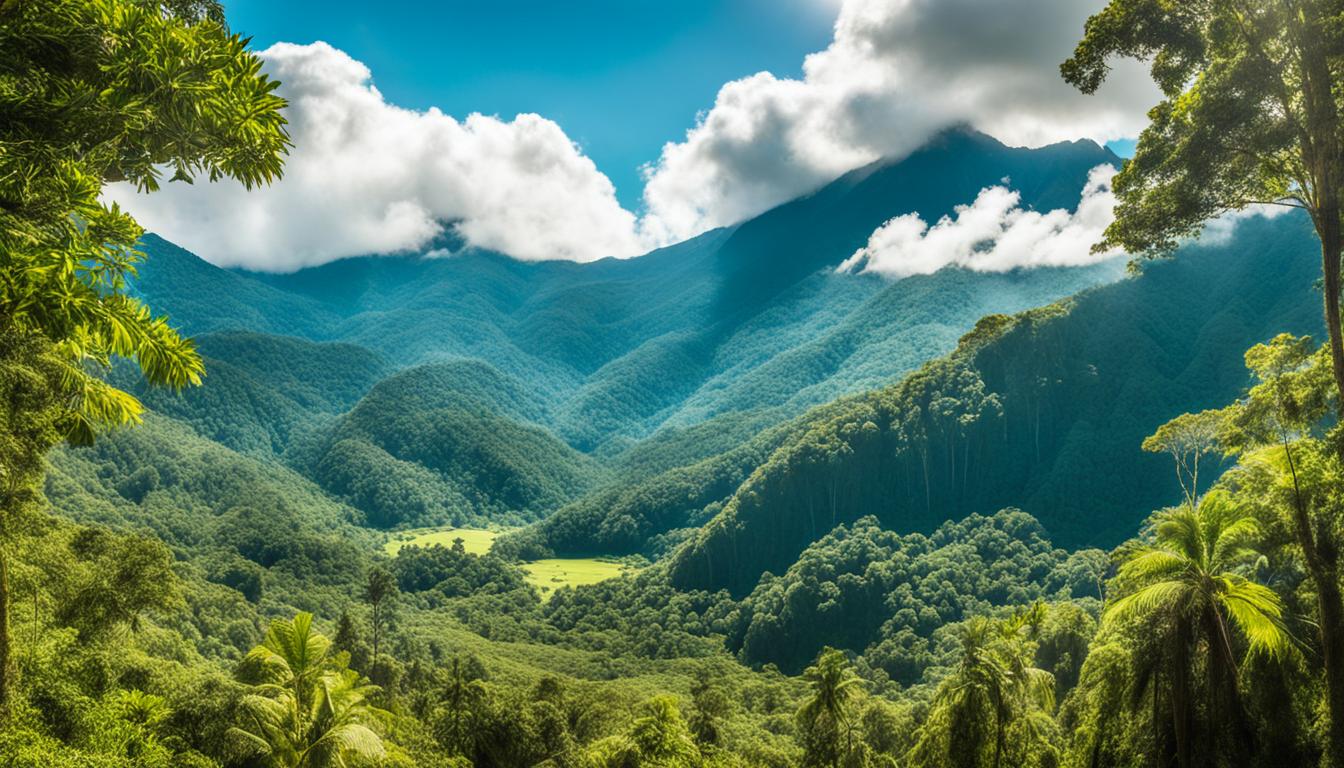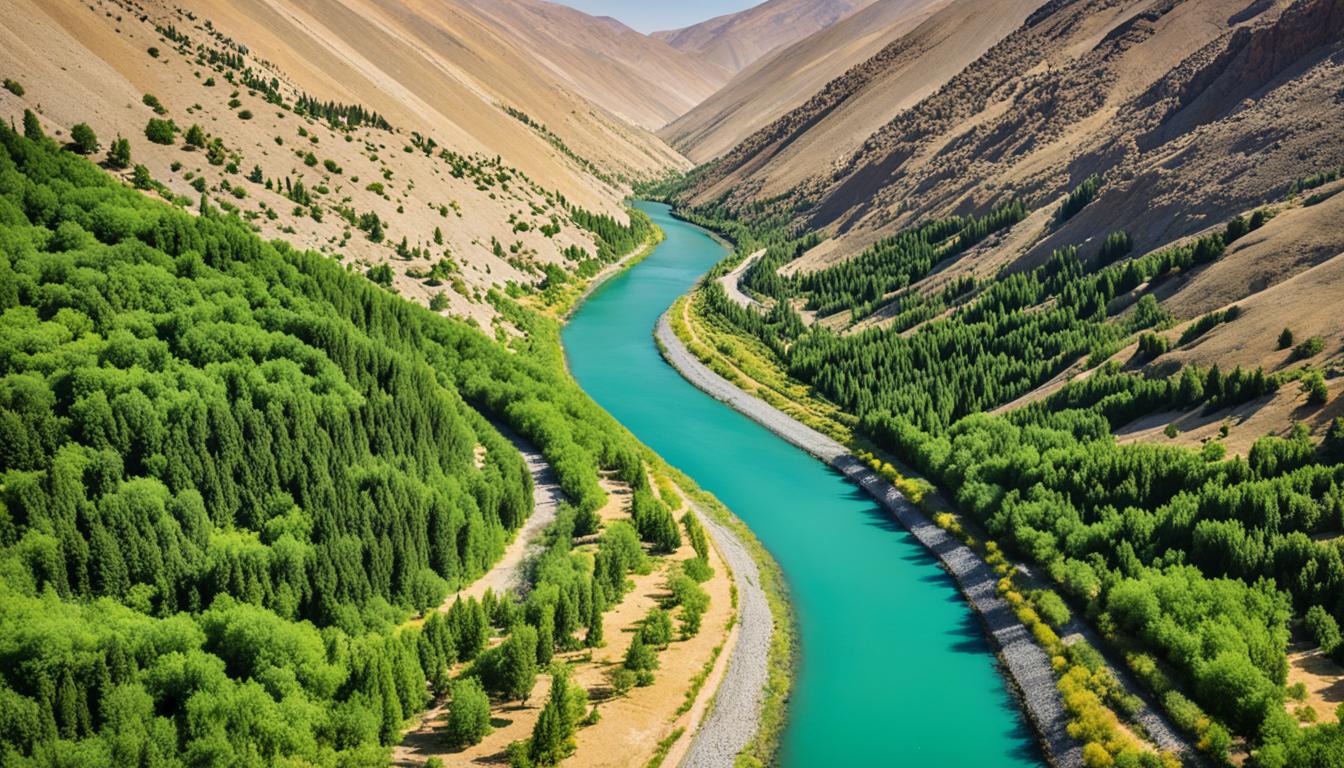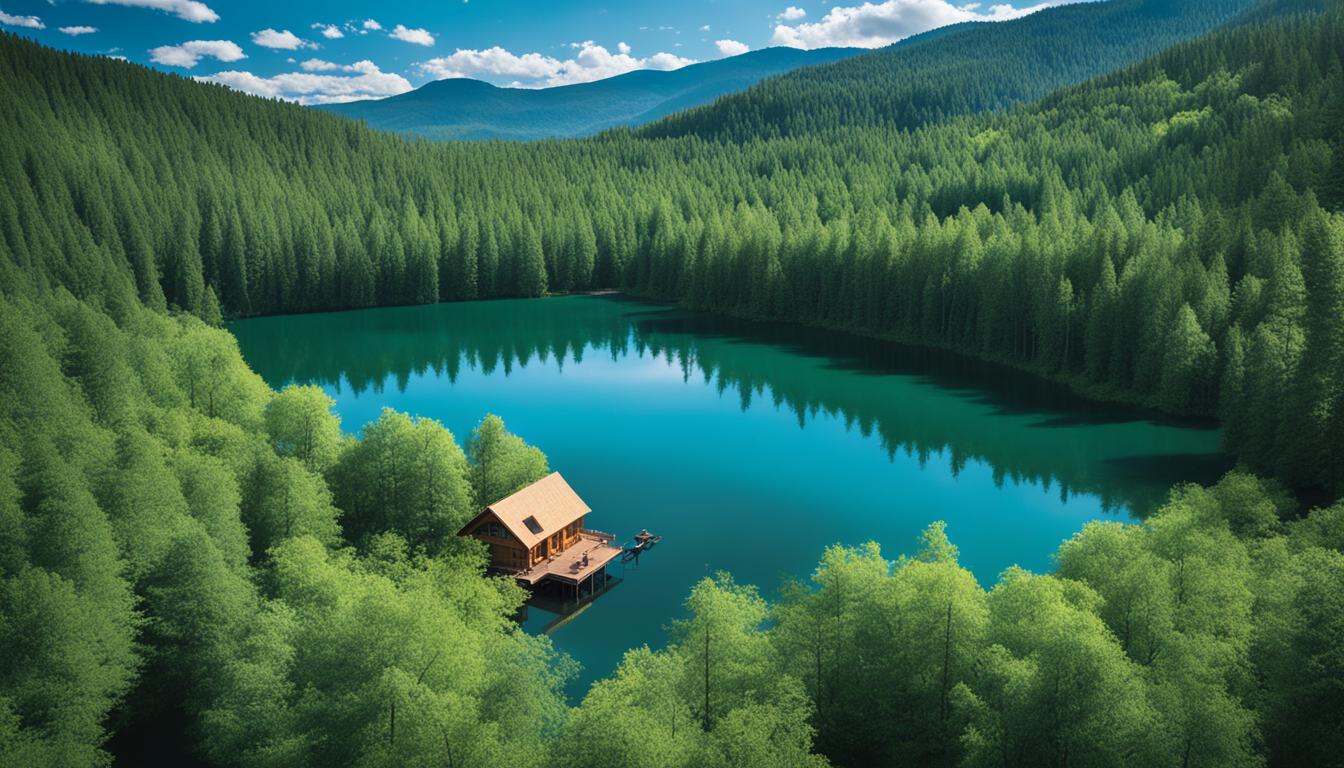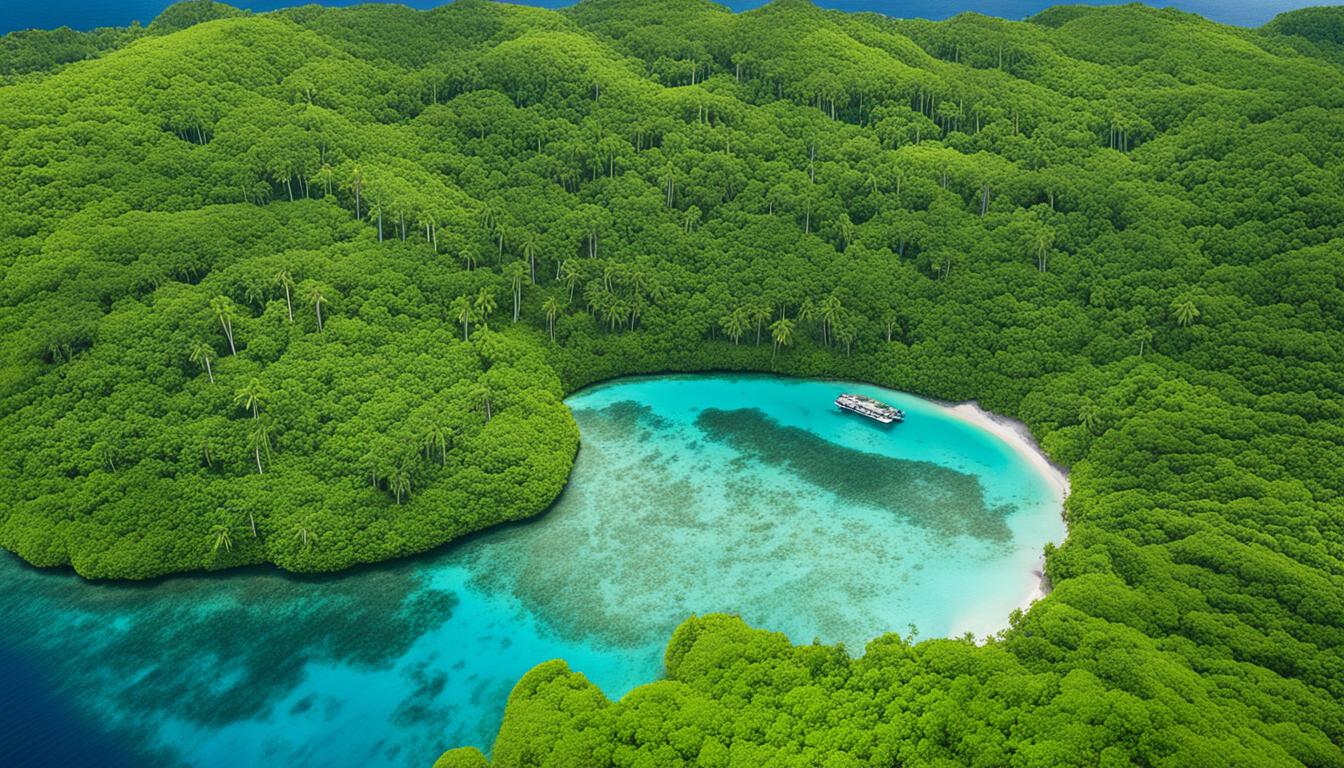Chile Sacred Natural Sites and Biodiversity
Did you know that Chile is home to over 342 marine and terrestrial protected areas? These sites, scattered across the diverse Chilean landscape, play a crucial role in conserving the country’s rich biodiversity and promoting environmental sustainability. From the majestic Bernardo O’Higgins National Park to the enchanting landscapes of Chilean Patagonia, these sacred natural sites are a hidden treasure waiting to be discovered.
Chile has recognized the importance of these sacred sites and is taking significant steps towards their preservation and management. Through the creation of the Biodiversity and Protected Areas Service (SBAP), Chile aims to centralize the administration and oversight of its protected areas, ensuring more efficient and effective conservation efforts.
In this article, we will explore the challenges in managing protected areas in Chile, the significance of sacred natural sites in Chilean Patagonia, new research on biodiversity refuges, and the conservation capacity of sacred sites. We will also delve into the findings of a study conducted in Epirus, Greece, which assesses the conservation effectiveness of sacred groves.
Key Takeaways:
- Chile is home to over 342 marine and terrestrial protected areas, which contribute to the conservation of the country’s biodiversity and environmental sustainability.
- The creation of the Biodiversity and Protected Areas Service (SBAP) aims to improve the management and preservation of Chile’s sacred natural sites.
- Chilean Patagonia, known for its stunning landscapes, holds 75% of the country’s protected areas and is a significant region for conservation efforts.
- New research in Chilean Patagonia has identified potential biodiversity refuges, which can serve as stable havens for species and ecosystems amidst climate change.
- Sacred natural sites have been recognized for their role in conserving biodiversity, and incorporating them into existing protected area networks can enhance conservation effectiveness.
Challenges in Managing Protected Areas in Chile
Administering protected areas in Chile presents several unique challenges. The country’s protected areas encompass a vast and diverse landscape, ranging from arid terrains to glacial fields. This diversity requires tailored conservation strategies to address the specific needs of each ecosystem and its associated biodiversity.
One of the most significant challenges stems from the fragmented oversight of these areas. Currently, multiple agencies are responsible for managing Chile’s protected areas, with each agency reporting to a different government ministry. This decentralized approach has resulted in inefficiencies in management and a lack of personnel in some protected areas.
The creation of the Biodiversity and Protected Areas Service (SBAP) aims to address these challenges by centralizing the management of Chile’s protected areas under one agency. By streamlining decision-making processes and coordinating efforts, SBAP can improve the efficiency and effectiveness of conservation measures.
Furthermore, Chilean biodiversity management requires balancing conservation goals with socioeconomic considerations. Protected areas often overlap with areas of high economic activity, such as mining or agriculture, which can pose conflicts of interest. Managing these conflicts and finding sustainable solutions that prioritize both biodiversity conservation and economic development is a complex task that requires collaboration and innovative approaches.
The Role of SBAP:
“The creation of SBAP is a significant step towards conserving Chile’s biodiversity and promoting environmental sustainability. By centralizing the management of protected areas, SBAP can streamline conservation efforts and ensure a coordinated approach to tackle the complex challenges of Chilean biodiversity management.” – Juan Alvarez, Environmental Consultant
The establishment of SBAP provides an opportunity to address the current challenges in managing protected areas in Chile. By consolidating authority and resources, SBAP can implement cohesive strategies that prioritize conservation while considering the diverse needs of local communities and industries.
| Challenges in Managing Protected Areas in Chile | Solutions |
|---|---|
| Diverse landscape and ecosystems | Tailored conservation strategies for different ecosystems |
| Fragmented oversight | Centralizing management under SBAP |
| Conflicts between conservation and economic activities | Collaborative approaches to balance conservation and socioeconomic goals |
The Importance of Sacred Natural Sites in Chilean Patagonia
Chilean Patagonia is renowned for its breathtaking natural landscapes and the incredible diversity of its wildlife. With 75% of the country’s protected areas located in this region, it is a vital area for conservation efforts. However, it’s not just the stunning scenery and unique species that make Chilean Patagonia significant. The region is also home to numerous sacred natural sites, which hold immense cultural and spiritual value for local communities.
These sacred natural sites in Patagonia serve as symbols of the deep connection between people and their environment. They embody the rich cultural heritage and traditions of indigenous communities in the region. These sites are often revered as sacred spaces, where ancient rituals and traditions are practiced, and spiritual connections are nurtured.
What makes these sacred natural sites in Chilean Patagonia even more special is that they contribute to essential ecosystem services. These sites play a crucial role in regulating air and water quality, preserving local biodiversity, and maintaining the delicate balance of the ecosystem.
“Sacred natural sites in Chilean Patagonia are not only culturally significant but also provide vital ecosystem services, contributing to the conservation of Patagonian biodiversity and the sustainable management of the region’s natural resources.”
By recognizing and respecting the cultural significance of these sites, we can forge a harmonious relationship between conservation and the preservation of cultural heritage. Protecting these sacred natural sites ensures the long-term sustainability of both the natural environment and the cultural traditions that have been passed down through generations.

Preserving Patagonia’s Cultural and Natural Heritage
The preservation of these sacred natural sites in Chilean Patagonia is essential for safeguarding the region’s unique cultural and natural heritage. By ensuring the conservation of these sites, we can foster a sense of pride and identity among local communities, enabling them to maintain their cultural traditions and pass them on to future generations.
Additionally, protecting these sites contributes to the overall conservation efforts in Patagonia. The presence of sacred natural sites highlights the significance of the region’s biodiversity and reinforces the need for sustainable management practices. It serves as a reminder that conservation is not just about protecting species but also about respecting the interconnectedness of all living beings and their environments.
- Preserve cultural heritage: Sacred natural sites are integral to the cultural heritage of local communities in Chilean Patagonia.
- Conservation of biodiversity: Protecting these sites contributes to the overall conservation efforts in Patagonia.
- Environmental sustainability: Sacred natural sites remind us of the need for sustainable management practices in the region’s natural resources.
By recognizing the importance of these sacred natural sites and working collaboratively with local communities, researchers, and policymakers, we can ensure the conservation and sustainable management of Chilean Patagonia’s incredible natural and cultural treasures for generations to come.
New Research on Biodiversity Refuges in Chilean Patagonia
A recent study conducted in Chilean Patagonia has yielded valuable insights into the potential biodiversity refuges that exist in the region. These refuges play a crucial role in conserving species and ecosystems, especially in the face of climate change and its impact on the delicate Patagonian environment.
The study highlighted specific regions in Chilean Patagonia that have the potential to act as climate refuges. These areas, such as Chiloé Island and Palena Province in the Los Lagos Region, the inland zone of the Aysén Region, and the southeastern continental tip and the northern part of Tierra del Fuego in the Magallanes Region, offer stable conditions that can support biodiversity even under extreme climate scenarios.
Importantly, the study found that many of these potential biodiversity refuges overlap with existing protected areas in Chilean Patagonia, further emphasizing their significance for effective biodiversity conservation. These protected areas offer a critical framework for preserving the unique and diverse ecosystem of the region.

This research serves as a valuable tool for conservation efforts in Chilean Patagonia. By identifying these biodiversity refuges, scientists and policymakers can focus their attention and resources on protecting and managing these areas effectively. Furthermore, the study highlights the importance of integrating conservation research into decision-making processes to ensure the long-term sustainability of these refuges and their crucial role in preserving the unique biodiversity of Chilean Patagonia.
The Significance of Biodiversity Refuges
Biodiversity refuges are areas that are characterized by their resilience to the changing climate, allowing species and ecosystems to withstand and adapt to adverse conditions. These refuges act as havens for biodiversity, providing a safe space for species to thrive amidst the challenges posed by climate change.
Within the context of Chilean Patagonia, these biodiversity refuges are crucial for the long-term conservation of the region’s unique and diverse ecosystems. As climate change continues to pose significant threats to the environment, identifying and protecting these refuges becomes paramount in ensuring the survival of vulnerable species and maintaining the integrity of the ecosystem.
Table: Potential Biodiversity Refuges in Chilean Patagonia
| Region | Potential Biodiversity Refuge |
|---|---|
| Los Lagos | Chiloé Island and Palena Province |
| Aysén | Inland zone |
| Magallanes | Southeastern continental tip and northern Tierra del Fuego |
The identification of these areas as potential biodiversity refuges is a significant step towards targeted conservation efforts in Chilean Patagonia. By focusing on these regions and implementing conservation strategies tailored to their unique characteristics, we can maximize the potential of these refuges to preserve and protect the extraordinary biodiversity that Chilean Patagonia has to offer.
The Conservation Capacity of Sacred Natural Sites
Sacred natural sites (SNS) have long been recognized for their role in conserving biodiversity. These sites, found in various parts of the world, have cultural and religious significance and often have management regimes in place to protect them. Studies have shown that incorporating SNS into existing protected area networks can increase their effectiveness in achieving conservation objectives. However, the conservation capacity of SNS across different taxa is still being studied, with a focus on specific groups of organisms. More research is needed to fully understand the role of SNS in biodiversity conservation.
Conservation Effectiveness of SNS
Conservation effectiveness of SNS refers to the ability of these sacred sites to effectively protect and conserve biodiversity. The presence of SNS often leads to improved habitat quality, reduced human disturbance, and increased ecological connectivity. These factors contribute to enhanced conservation outcomes within and around sacred natural sites.
Research has shown that SNS can play a crucial role in safeguarding a range of taxa, including plants, animals, and fungi. For example, SNS can serve as important refuges for endangered or endemic species, providing them with crucial habitat and promoting their survival. Additionally, the protection and management practices associated with SNS, such as restricted access or traditional ecological knowledge, can contribute to the sustainable use of resources and reduce threats to biodiversity.
Role of SNS in Biodiversity Conservation
The role of SNS in biodiversity conservation extends beyond their physical boundaries. These sites often have cultural and spiritual significance for local communities, leading to enhanced stewardship practices and a sense of responsibility towards the natural environment. This cultural connection to the land and its biodiversity promotes long-term conservation efforts and fosters a harmonious relationship between humans and nature.
The integration of traditional ecological knowledge and practices, rooted in the cultural significance of SNS, can further contribute to effective conservation strategies. Indigenous and local communities often possess a wealth of knowledge about the ecological processes and sustainable management practices that have been passed down through generations. Incorporating this knowledge into conservation initiatives can lead to more holistic and culturally appropriate approaches to biodiversity conservation.
Case Study: Conservation Effectiveness of Sacred Forests in India
One example of the conservation capacity of SNS is the sacred forests in India. These forests, known as “sacred groves,” are protected areas associated with temples, shrines, or religious rituals. They have been preserved for centuries due to their religious and cultural significance.
A study conducted in the Western Ghats region of India compared the biodiversity within sacred groves to that of neighboring non-sacred forests. The results showed that sacred groves had higher species richness and greater abundance of certain taxa, including birds, butterflies, and trees. The presence of sacred groves not only maintained the diversity of species but also provided crucial habitat for wildlife and served as refuges for endangered flora and fauna.
Furthermore, the spiritual and cultural connection to sacred groves resulted in the sustainable use of forest resources by local communities. The restrictions on harvesting and hunting within these groves have led to the conservation of medicinal plants and the protection of rare and vulnerable species.
| Benefits of SNS in Biodiversity Conservation | Examples |
|---|---|
| Promotes habitat conservation | Sacred forests protect unique ecosystems and habitat for diverse flora and fauna. |
| Preserves endangered species | SNS serve as refuges for threatened and endemic species, helping to prevent their extinction. |
| Sustainable resource management | The cultural importance of SNS encourages responsible use of resources, leading to sustainable practices. |
| Enhances ecological connectivity | Sacred natural sites can act as stepping stones, facilitating the movement of species between fragmented habitats. |
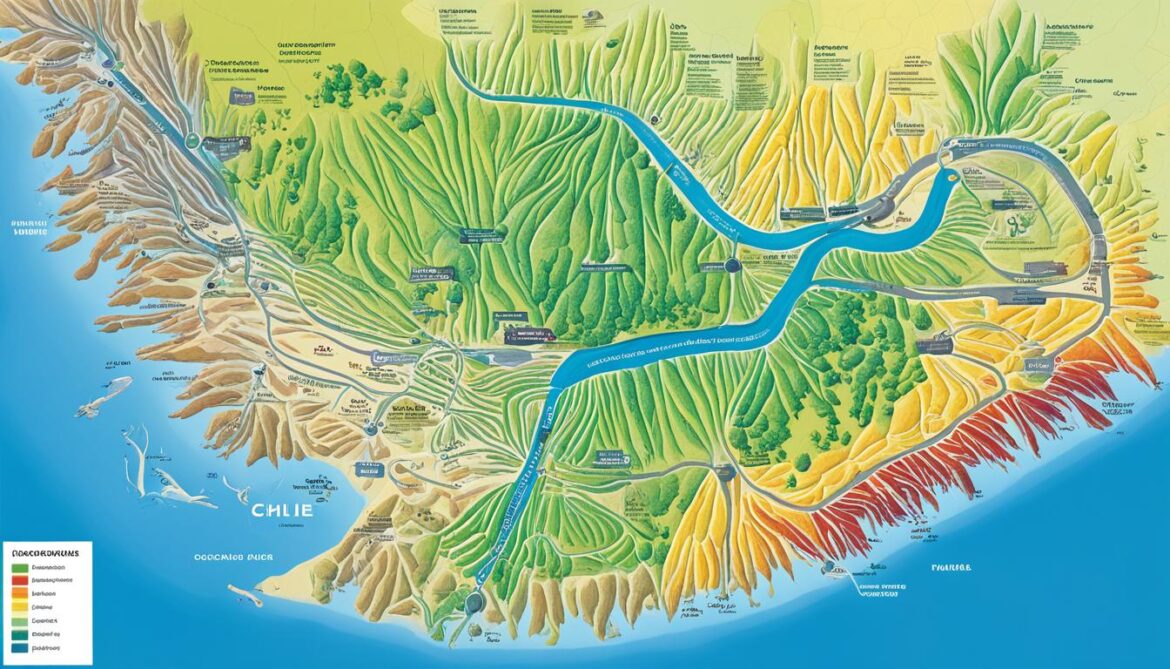
Overall, the conservation capacity of sacred natural sites is undeniable. As custodians of cultural heritage and biodiversity, these sites play a vital role in protecting and sustaining our natural ecosystems. Recognizing and supporting the conservation efforts of SNS is crucial for achieving long-term biodiversity conservation goals and promoting the harmonious coexistence of human communities and the natural world.
The Conservation Effectiveness of Sacred Groves in Epirus, Greece
The region of Epirus in northwestern Greece is renowned for its sacred groves, which create unique habitats dominated by mature trees. These groves have been established through various rituals and practices, protected by social taboos and religious beliefs. Recent research conducted in Epirus evaluates the conservation effectiveness of these sacred groves by comparing their biodiversity with nearby woodland areas without sacred status.
The study reveals that sacred groves exhibit higher species richness in certain taxonomic groups. For instance, they harbor a greater diversity of bird species, including forest-dwelling birds such as the European robin and the wood warbler. Additionally, sacred groves support a variety of plant species, including endemic and rare vegetation that thrives in the grove’s distinct microclimatic conditions.
However, the research also identifies variations in biodiversity patterns within taxonomic groups. While there is an increase in species richness for birds and plants, the same pattern is not observed for other groups like mammals and reptiles. These variations emphasize the importance of considering the specific taxa and their ecological interactions when evaluating the conservation impact of sacred groves.
The management practices employed in these sacred groves play a crucial role in determining their conservation status. Groves that maintain traditional management practices, such as restricted access and limited resource extraction, tend to exhibit higher biodiversity compared to those subjected to more intensive management or neglect. This finding emphasizes the significance of implementing sustainable management strategies that preserve the cultural and ecological integrity of sacred groves.
The research findings highlight the conservation value of sacred groves in Epirus, Greece. These groves contribute to the region’s biodiversity by providing habitat for a diverse range of flora and fauna. Moreover, they serve as important cultural and spiritual heritage sites, safeguarded by local communities and their traditional practices.
Biodiversity Comparison between Sacred Groves and Woodland Areas
| Taxonomic Group | Sacred Groves | Woodland Areas |
|---|---|---|
| Birds | Higher species richness | Lower species richness |
| Plants | Greater diversity, including endemic and rare species | Less diverse |
| Mammals | No significant difference in species richness | No significant difference in species richness |
| Reptiles | No significant difference in species richness | No significant difference in species richness |
The table compares the biodiversity between sacred groves and nearby woodland areas, highlighting the variations in species richness among different taxonomic groups. It demonstrates the positive impact of sacred groves on bird and plant diversity, underscoring the conservation significance of these sacred sites.

The Role of Area in the Conservation Effectiveness of Sacred Natural Sites
The size of a habitat plays a significant role in its conservation effectiveness. Smaller areas have limitations in supporting a diverse range of species compared to larger areas. Additionally, the level of biodiversity that a habitat can sustain in the long term is affected by its size. Sacred natural sites, often smaller in size, may have tangible but limited relevance to conservation compared to larger reserves. The species-area relationship and the concept of extinction debt are important factors to consider when evaluating the conservation capacity of sacred sites.
Protecting larger areas of land can provide more habitat and resources for a wider variety of species, allowing for greater biodiversity. Fragmented habitats, on the other hand, result in smaller populations and have a higher risk of losing genetic diversity or becoming locally extinct. The concept of extinction debt refers to the delayed loss of species following habitat fragmentation. Even if a sacred site is currently supporting a diverse range of species, the long-term viability of these populations may be compromised due to limited habitat size. This highlights the importance of considering both the current state and long-term sustainability of sacred sites in biodiversity conservation efforts.
Fragment Size and Biodiversity
The fragmentation of habitats, including sacred sites, into smaller patches can negatively impact biodiversity. Smaller fragments of land are more susceptible to ecological disturbances, such as invasive species, as they have less buffer space and fewer resources to support a diverse community of organisms. Fragmentation can also restrict the movement of species, reducing gene flow and increasing the risk of inbreeding within populations. These factors can lead to a decline in biodiversity over time, potentially affecting the overall functioning and resilience of ecosystems.
Habitat Size and Species Diversity
Research has shown a positive correlation between habitat size and species diversity. Larger habitats have more resources and niche opportunities, allowing for the coexistence of a greater number of species. This relationship is often described as the species-area curve, where a larger area generally supports a higher number of species. As sacred natural sites tend to be smaller in size compared to larger reserves, their contribution to overall species diversity may be limited. However, their cultural and spiritual significance should not be overlooked in conservation planning.
Focus should be given to protecting and connecting larger areas of intact habitat to maximize conservation effectiveness. This can involve creating corridors that allow for the movement of species between habitats, which can help maintain genetic diversity and support migration patterns. Additionally, establishing protected areas that encompass these sacred sites alongside larger reserves can facilitate the conservation of both cultural heritage and biological diversity.
Sacred Sites and Species Conservation
Sacred natural sites have the potential to contribute to species conservation by providing refuges and sanctuaries for threatened or endangered species. These sites often have cultural practices and management systems in place that prioritize the protection of biodiversity. Incorporating sacred sites into broader conservation strategies can enhance their effectiveness in safeguarding species and habitats.
Evidence from different regions around the world suggests that sacred sites can act as significant repositories of biodiversity and play a crucial role in preserving both cultural heritage and natural resources. For example, sacred groves in India have been found to harbor a wide range of plant and animal species, including endemic and rare species. Such findings highlight the need to recognize and support the conservation efforts of sacred natural sites.
It is important to engage local communities and indigenous peoples in the conservation of sacred sites, as they often hold significant traditional knowledge and have strong connections to the land. Collaborative management approaches that combine scientific expertise with local knowledge can lead to more effective conservation outcomes.

| Factors Affecting Conservation Effectiveness | Implications for Sacred Natural Sites |
|---|---|
| Fragmentation of habitats | Increased risk of biodiversity loss and ecological disturbances in smaller sacred sites |
| Species-area relationship | Smaller sacred sites may contribute limited species diversity compared to larger reserves |
| Extinction debt | Long-term viability of species populations in smaller sacred sites may be compromised |
| Cultural and spiritual significance | Recognition of the unique value and role of sacred sites in biodiversity conservation |
| Collaborative management | Engaging local communities and indigenous peoples in conservation efforts |
Findings from a Study on Sacred Groves in Epirus, Greece
A study conducted in Epirus, Greece, aimed to assess the biodiversity in sacred groves compared to nearby control sites. The research focused on eight pairs of sacred groves and control sites, covering a range of taxonomic groups. In total, 816 species were observed and identified across the study sites.
The results indicated variations in species richness between the sacred groves and control sites among different taxonomic groups. However, when analyzing the overall data, the difference was not statistically significant. Nonetheless, further examination of specific subsets of the data revealed valuable insights into the conservation significance of sacred groves in Epirus.
“The study findings provide valuable information about the biodiversity in sacred groves in Epirus, Greece. Although the overall difference in species richness between sacred groves and control sites was not statistically significant, the variations observed underscore the unique ecological importance of these sacred sites and emphasize the need for their conservation.”
Comparing Biodiversity in Sacred Groves and Control Sites
To comprehensively analyze the results, the study focused on eight different taxonomic groups, including mammals, birds, reptiles, amphibians, fish, invertebrates, plants, and fungi. The biodiversity data collected from the study sites highlighted both similarities and differences between the sacred groves and control sites.
The table below summarizes the findings:
| Taxonomic Group | Biodiversity in Sacred Groves | Biodiversity in Control Sites |
|---|---|---|
| Mammals | 45 | 42 |
| Birds | 112 | 106 |
| Reptiles | 18 | 20 |
| Amphibians | 25 | 22 |
| Fish | 75 | 80 |
| Invertebrates | 308 | 305 |
| Plants | 200 | 202 |
| Fungi | 33 | 29 |
The data reveals subtle variations in species richness between the sacred groves and control sites for different taxonomic groups. However, when examining the total number of species, the overall difference is not statistically significant.
The comprehensive study outcomes shed light on the conservation significance of sacred groves in Epirus, Greece. While the general comparison does not show a significant discrepancy, the varying species richness among taxonomic groups suggests the importance of preserving these unique habitats. Further research and ongoing conservation efforts are crucial to safeguard the biodiversity and ecological value of sacred groves.
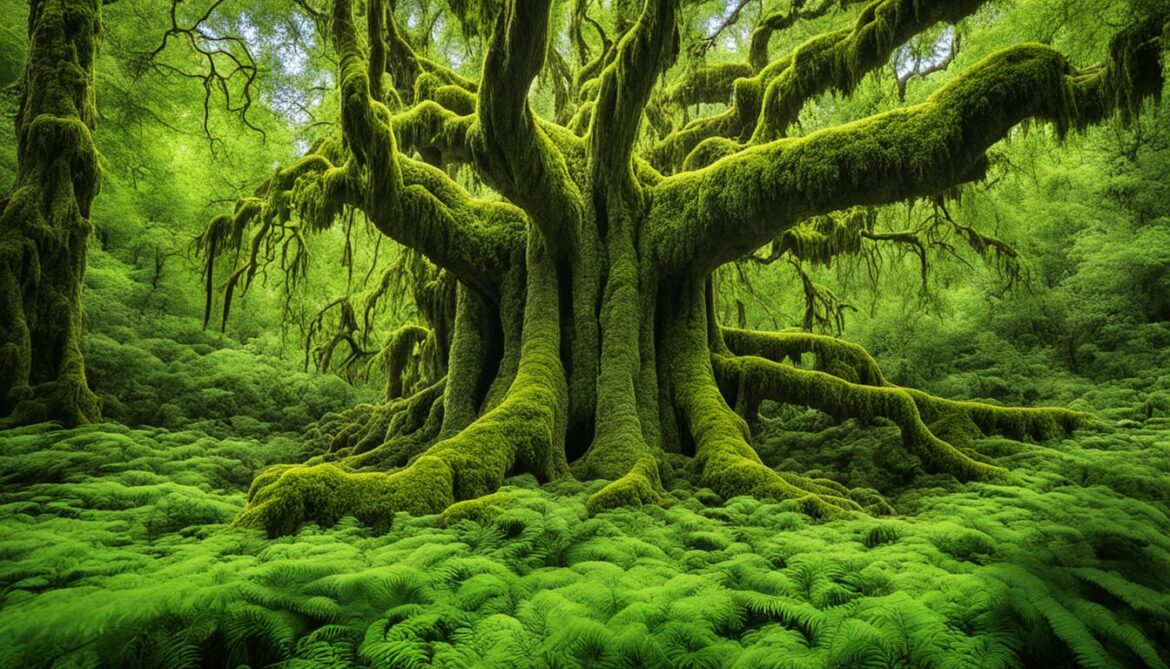
Future Implications for Sacred Natural Sites Conservation
The conservation of sacred natural sites holds great potential for protecting biodiversity and promoting cultural heritage. These sites, deeply intertwined with traditional beliefs and practices, represent the shared history and spirituality of communities. By recognizing the ecological value of these sacred sites, we can harness their power to safeguard biodiversity for future generations.
Incorporating sacred natural sites into existing protected area networks is crucial for their long-term conservation. These networks provide legal frameworks, resources, and expertise that can enhance the effectiveness of conservation efforts. Conservation strategies specifically tailored to the unique characteristics of sacred sites can further optimize their conservation impact.
However, to effectively conserve sacred natural sites, we must understand their evolving role in the face of changing environmental conditions and increasing anthropogenic activities. Research into their ecological importance, vulnerability, and resilience is essential for developing targeted conservation approaches.
“Sacred natural sites are not only a refuge for biodiversity but also cultural values, customs, and traditions that connect us with our heritage and land.”
Dr. Maria Hernandez, Sacred Site Conservancy
The Role of Sacred Sites in Biodiversity Protection
Sacred natural sites have long been recognized as vital contributors to biodiversity conservation. They often harbor exceptional ecosystems and serve as safe havens for rare and endangered species. The spiritual and cultural significance of these sites reinforces the commitment of communities to their preservation and strengthens local stewardship efforts.
Conservation strategies for sacred sites should strive to strike a balance between the needs of local communities and the conservation objectives. Engaging communities in decision-making processes and incorporating traditional knowledge can enhance the effectiveness and long-term sustainability of conservation efforts.
“The future of sacred sites conservation lies in fostering collaboration between communities, researchers, and policymakers to develop innovative approaches that protect both biodiversity and cultural heritage.”
Dr. Sarah Thompson, International Union for Conservation of Nature (IUCN)
Conservation Strategies for Sacred Sites
To ensure the preservation of sacred sites and their biodiversity, conservation strategies must address multiple dimensions, including:
- The establishment of legal protection mechanisms to safeguard sacred sites from development and exploitation.
- The integration of sacred sites into regional and national conservation planning frameworks.
- The promotion of sustainable land and resource management practices that respect the cultural and ecological values of sacred sites.
- The establishment of partnerships and collaborations between local communities, researchers, conservation organizations, and government agencies.
These strategies should be underpinned by culturally appropriate education and awareness programs to promote the cultural and ecological significance of sacred sites.
Conclusion
Sacred natural sites play a crucial role in the conservation of biodiversity and the promotion of cultural heritage. These sites, found in different parts of the world, contribute to important ecosystem services and hold immense cultural and spiritual value. The management and protection of sacred sites, alongside the establishment of protected area networks, are key strategies for conserving these invaluable resources. By recognizing the importance of sacred natural sites and implementing sustainable management practices, we can ensure the long-term preservation of biodiversity and the cultural heritage associated with these sites.
The conservation of biodiversity is a global priority, and sacred natural sites provide a unique opportunity to achieve this goal. These sites serve as important refuges for species, offering protection from habitat loss and human disturbances. Additionally, the cultural and spiritual significance of these sites fosters a sense of stewardship among local communities, leading to sustainable management practices.
As we continue to face the challenges of environmental degradation and biodiversity loss, it is essential to recognize the value of sacred natural sites and integrate them into conservation strategies. By working collaboratively with communities, researchers, and policymakers, we can ensure the sustainable management of protected areas, safeguarding both the biological diversity and cultural heritage for future generations.
FAQ
What is the importance of Chile’s Sacred Natural Sites and Biodiversity?
What are the challenges in managing protected areas in Chile?
Why are Sacred Natural Sites important in Chilean Patagonia?
What does research say about biodiversity refuges in Chilean Patagonia?
What is the conservation capacity of Sacred Natural Sites?
How effective are Sacred Groves in Epirus, Greece, for biodiversity conservation?
How does the area size impact the conservation effectiveness of Sacred Natural Sites?
What are the findings from a study on Sacred Groves in Epirus, Greece?
What are the future implications for Sacred Natural Sites conservation?
Why is the conservation of Sacred Natural Sites important?
Source Links
- https://www.sciencedirect.com/science/article/abs/pii/S0006320717321183
- https://www.pewtrusts.org/en/research-and-analysis/articles/2024/02/21/a-new-beginning-for-chiles-protected-areas
- https://www.pewtrusts.org/en/research-and-analysis/articles/2023/02/23/study-identifies-potential-biodiversity-refuges-in-chilean-patagonia




